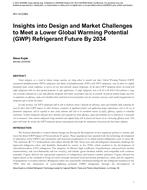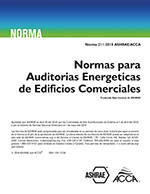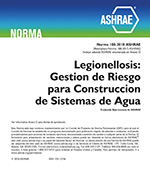Description
Today designers, as a result of climate change concerns, are being asked to consider new lower Global Warming Potential (GWP) unsaturated hydrofluorocarbon (HFO) refrigerants and blends of hydrofluorocarbon (HFC) with HFO refrigerants, some of which are slightly flammable under certain conditions, as well as the less than desirable natural refrigerants. In the lower GWP refrigerant future, the world will adopt refrigerants with less than optimal properties in some applications. A single refrigerant, such as R-22 or R-410A that addresses a large area of market demands for a safe, high efficiency refrigerant with lowest cost products may not be available. In general, product designs may have to compromise on efficiency, safety and reliability which could lead to increased product costs for consumers and may result market fragmentation by refrigerant type to enable this future.
In some instances, new HFO refrigerants will be able to maintain society’s demands for efficiency, safety and reliability while balancing the need for lower direct GWP impact. In other instances, acceptance of significant product and application design compromises, such as the use of flammable refrigerants, will be required or more costly solutions will need to be considered because of safety, efficiency, capacity or reliability constraints. Natural refrigerants will gain more attention and expanded use when efficiency, safety and reliability can be delivered at a reasonable cost to consumers. Some natural refrigerants being considered and adopted today will be phased out because of ever increasing efficiency needs. This paper will review the various low GWP refrigerant options being proposed and weigh the compromises they present for their future adoption.
Today designers, as a result of climate change concerns, are being asked to consider new lower Global Warming Potential (GWP) unsaturated hydrofluorocarbon (HFO) refrigerants and blends of hydrofluorocarbon (HFC) with HFO refrigerants, some of which are slightly flammable under certain conditions, as well as the less than desirable natural refrigerants. In the lower GWP refrigerant future, the world will adopt refrigerants with less than optimal properties in some applications. A single refrigerant, such as R-22 or R-410A that addresses a large area of market demands for a safe, high efficiency refrigerant with lowest cost products may not be available. In general, product designs may have to compromise on efficiency, safety and reliability which could lead to increased product costs for consumers and may result market fragmentation by refrigerant type to enable this future.
In some instances, new HFO refrigerants will be able to maintain society’s demands for efficiency, safety and reliability while balancing the need for lower direct GWP impact. In other instances, acceptance of significant product and application design compromises, such as the use of flammable refrigerants, will be required or more costly solutions will need to be considered because of safety, efficiency, capacity or reliability constraints. Natural refrigerants will gain more attention and expanded use when efficiency, safety and reliability can be delivered at a reasonable cost to consumers. Some natural refrigerants being considered and adopted today will be phased out because of ever increasing efficiency needs. This paper will review the various low GWP refrigerant options being proposed and weigh the compromises they present for their future adoption.
Citation: ASHRAE Papers CD: 2014 ASHRAE Winter Conference, New York, NY
Product Details
- Published:
- 2014
- Number of Pages:
- 8
- File Size:
- 1 file , 1.3 MB
- Product Code(s):
- D-NY-14-C064




